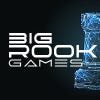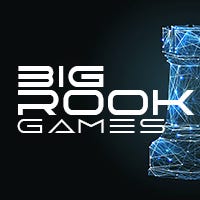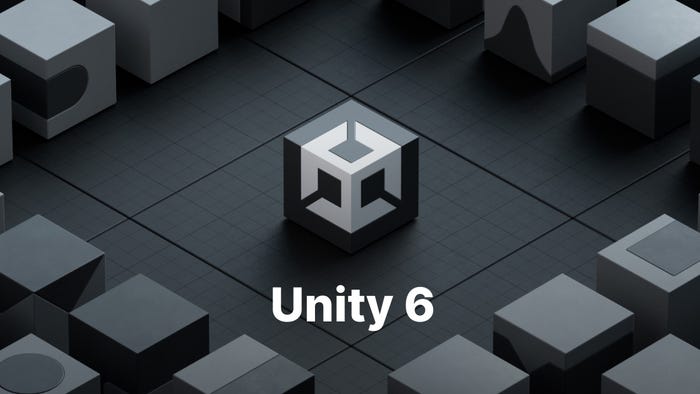How Player Feedback Completely Changed Hero Syndrome
Take two genres that I really enjoy and fuse them into one. A new twist on existing mechanics and ideas. This turned out to be a big mistake and I alienated my target audience. After a long process, my game is now a much different (better) game.

It seemed to make sense. Take two genres that I really enjoy and fuse them into one. A new twist on existing mechanics and ideas.

3 years ago I had recently left my role as VP of Engineering from a startup, parting with a good salary and job security to pursue my passion for game development. I’ve dreamed of going full-time into game development for many years and had saved up enough money to pursue it seriously for 3 to 5 years.
I released a few titles on Xbox Live Indie Games on the side as a way to improve my programming skills after graduating college. The games did well, selling about 30,000 copies over 2 games and an app. Not bad for a nights-and-weekends project. The games were received well and Undead Empire stayed in the top 10 rated indie games list for 2 to 3 years.
I was encouraged and knew I could make better games if working full time.
I began making Hero Syndrome (at the time Fort Hero) around February 2018. The idea was to create a title that could be used as a tool for players to get better at building. I had played Fortnite and experienced how much their building mechanic adds to the competitive gameplay. I loved it. It was new, added a lot of strategy to an existing genre that hadn’t seen any big changes besides putting 100 players on a map at once. I wanted it to become a bigger part of gaming as a whole.
I also want to impact the competitive scene as well, and think an arena-style third-person shooter with building would be awesome and a few others agreed with me as well:
I started developing a third person controller and building mechanics with some help of a few plugins in Unity. As development pursued and feedback came in for the ideas, it was clear that making a training simulator would not be an easy path, especially when everyone just saw the game as a clone.
If I wanted to make a game that would allow me to continue making games and be seen as a contributor to the industry, it would have to be unique in some way.

I thought about what would be best to do as a solo developer. What features and aesthetics would be powerful but also achievable. Games like Superhot come to mind, with visuals that are not overly complex but still very polished and appealing. I also think puzzles are great for solo developers to create. Multiple variations on the same puzzle mechanics can be created using the same models and game objects, limiting the expense of buying custom made assets.

Puzzles also are very rewarding as a player. When done correctly, they give the player the feeling that they alone figured out a complex system of mechanics, even when they are purposely guided to go through a specific set of actions. I loved playing games like Portal and Braid.
When transitioning from the game that was meant to train players how to build faster, I sat down and thought about what I wanted to make as a developer. I wrote out what I thought I would be good at making, and what I have experience playing myself. Portal was the title that jumped out at me the most considering my own personal connection with it and the modular aspect that could be used to create a puzzle game.

My favorite games are more action-focused. I have spent the most time on first and third-person shooters. I love the action along with the challenge it provides the player. I knew these games inside and out, so this was an obvious direction I wanted to go.
If I was going to contribute to the industry that had provided me with so many hours of entertainment, I wanted to do what I knew I was good at and what I enjoyed.
I have since found that to be a mistake.
I think it is more important (if the goal is to be successful as a game developer) to find out what other people want and make that.

Hero Syndrome has changed a lot over the course of development. At first, a building trainer for building mechanics. After receiving initial feedback on the idea then pivoting to a puzzle-driven, narrative-heavy combat simulator. It made sense as a solo developer. Puzzles are modular mechanics that can reuse a lot of the same assets and designs, limiting expenses for a self-funded game.
At the time all of the assets were contracted out to a small studio called Zug Zug Studios. They did hand-drawn 3d models and textures and had a unique style that I really liked. It definitely is an investment and assets can get expensive. Zug Zug is a small passion-driven studio, but it still takes a lot of time to model and texture custom items.
For instance, this sniper rifle took them roughly 10 hours between modeling, texturing, converting to low poly, baking, and editing. At $40 an hour that’s $400 total for one weapon.

I also wanted the story to be AAA quality. I never really tried writing stories so I knew this would be best done by finding someone in the industry with a proven track record. I found a game writer that worked on a bunch of successful titles and reached out to him over email. His name was Evan Skolnick and he agreed to write the story for Hero Syndrome.
The first draft of what he wrote was different than the idea I provided but matched my taste in fiction perfectly. I was excited every time I received an update from him because I felt the story was so strong, and he seemed to understand what I was looking for while at the same time choosing story events that would cater to solo development.

Evan Skolnick’s work. more at www.evanskolnick.com
In the era of COVID and all things turning to digital formats, the Steam Games Festival seemed like a good opportunity to get Hero Syndrome out there. I previously had reserved a booth at GDC 2020, but that fell through as it was canceled. For that I developed a demo that took about 15-60 minutes to complete, depending on who was playing.
The game was a part of the Steam Festival, and I got a lot of valuable feedback from players and critics. There seemed to be a big divide between the players. For some, it was extremely easy and some had trouble getting past the first combat sequence. This should have been the first indicator that adjustments would be needed to even out the difficulty between players with different experiences.
I was targeting two major target audiences: Puzzle/Story and Combat/Action. I felt the combat was decent at the time of the demo, but knew a lot of work still had to be done with the enemies and how they interact with the player. I knew the story was solid, but the demo only had a glimpse of what it actually would include the intro itself didn’t contain a lot of emotionally charged gameplay or plot points.

The type of content that should have been in the Hero Syndrome Steam Festival demo.
I knew the story in its entirety so it was always exciting to me because I knew how great it became and how it evolved over the length of the game. This wasn’t seen in the demo though and it was mostly just a character and theme introduction.
I began seeing trends in playthroughs and feedback. The players that enjoyed titles like Portal or ones that were interested in the story did not do well with the combat sequences and especially the building. It was foreign to them and a brand new mechanic.
It would take them around an hour to complete the short demo, most didn’t make it that far and gave up after the first couple of action sequences. It wasn’t enjoyable for them, and why would it be? They don’t typically play action games. I wouldn’t expect them to adapt and change tastes based on my demo. Most were playing because it was in the puzzle genre or in response to a feedback request.

I had a decent-sized community on Discord (1500+ users) and through mailing lists (32,000 +) that showed interest in the game as well. The players from these groups were players that were attracted to the game based on the proposed multiplayer. It would be a more traditional 4v4 team deathmatch, an arena-style competitive shooter with building. The Discord community and mailing list both were generated over the period of a year on the website email signup.
Any of these players that were kind enough to stream or record the game seemed to be underwhelmed, as expected. Anyone that plays competitive online knows that campaigns can’t touch the excitement and skill required for online matches. The combat was so easy for players that are used to online multiplayer. They flew through it in 5 or 10 minutes, 15 on average. I don’t think I saw a single one of them interested in the story or puzzle aspects.

Mixing two genres can work, and I think even the ones I decided to fuse together could work too, but it would take a lot of playtesting and a lot of iterative design to get the balance right. Especially when a lot of the story is delivered through audio (the player is the focus of a test where the scientists that are observing can be heard, though not aware). The blend requires a delicate balance of downtime between fights so the dialogue can be delivered and high-intensity action during the fights.
It seemed I was taking two target audiences, and neglecting them both. Neither were amazing in their own rights in the demo. They both wanted more of what they expected out of the game. One side combat and the other puzzles and narrative. In an effort to mix the two, I wasn’t adding anything that was worthy of drawing the attention of the player, especially in a 30-minute demo that didn’t get into the core of the story and didn’t progress far enough to challenge the player by combat. It is not to say that it isn’t doable, but for my goal of releasing a product that would allow me to stay in this industry developing games, it didn’t seem like the right choice.
I didn’t want to abandon the story, because it had been developed so much and I really thought the story was great. I also had spent a lot of time on the combat side and thought that had great potential as well.
I made a decision to split the two. Focus one title on the puzzle and story elements, and the other on the combat, delivering high action, and integrating building into the mode.

Hostile Mars is the combat-focused title. It is a third-person shooter/persistent base building game. It has elements of item manufacturing and base distribution. It is like a third-person tower defense with the option to create your own army to defend the attackers. This is done while managing the automated distribution of ammo and power across turrets, traps, and gathering resources. It shares the same universe as Hero Syndrome and plays into that story, but in a very limited capacity.
It will be there to explain the gameplay and the environment setting along with a structure to provide a tutorial. The main focus will be action, and creativity with the combination of different traps against a huge amount of oncoming enemies. It focuses on base upgrades and ridiculously large turrets, as seen in this Reddit post that went to the top of /r/Unity3d.
Hero Syndrome will remain a story-driven puzzle game and will be completed after Hostile Mars. I am still extremely excited about the story and puzzle elements, and can’t wait to get back into development.
Right now, Hostile Mars is a part of the Steam Games Festival Autumn Edition. You can check it out here on Steam.
Read more about:
BlogsAbout the Author(s)
You May Also Like









